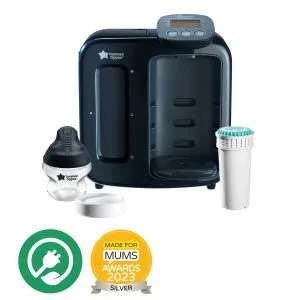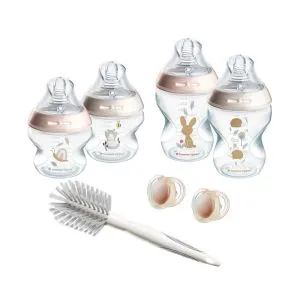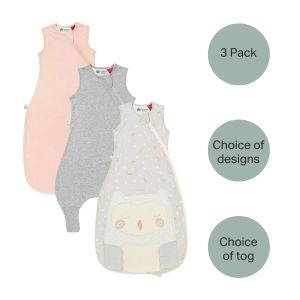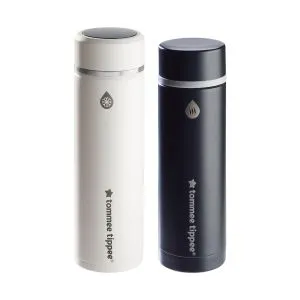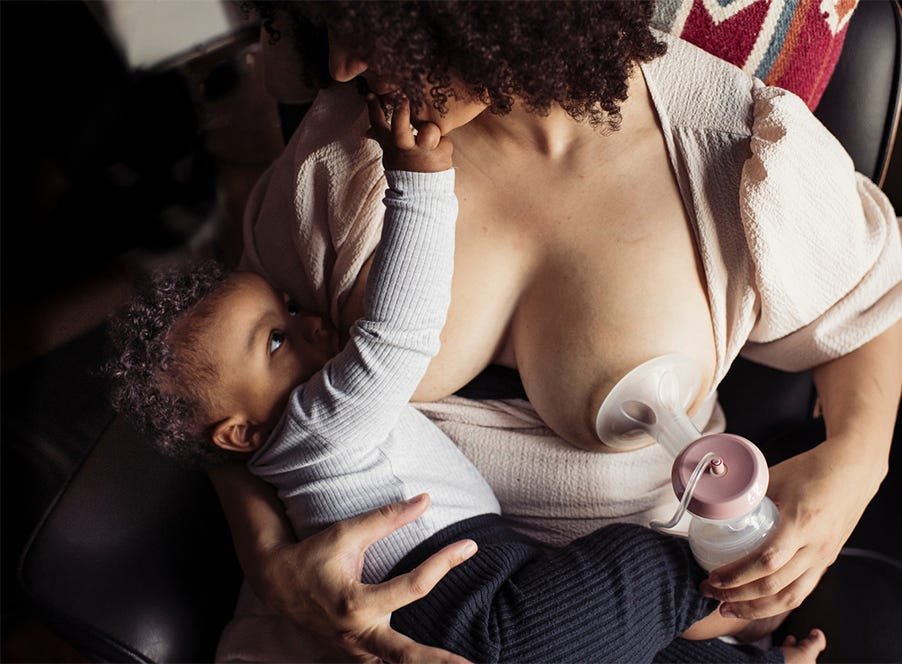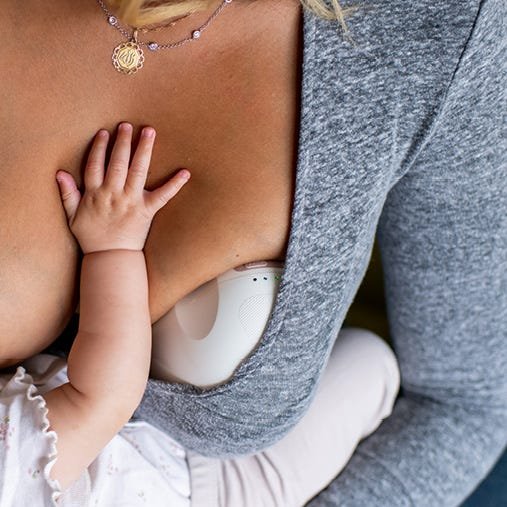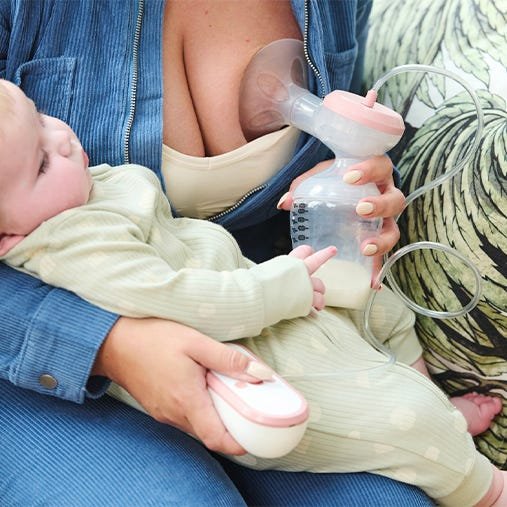We all know that breasts naturally come in different shapes and sizes. If you're someone with bigger breasts, you may find breastfeeding tricky for a number of reasons, and you're not alone!
It's a common misconception that if you have bigger breasts, breastfeeding will come naturally and you won't have any milk supply issues. Often this isn't the case! Everyone's breastfeeding journey is unique, and there are some specific challenges that people with big breasts face.
If you're worried about breastfeeding your baby or struggling with it, read on for some top tips and advice on breastfeeding with larger breasts.
The challenges of breastfeeding with bigger breasts
People with large breasts often encounter some unique issues when breastfeeding, these can include:
- Issues with latching: To achieve a good latch, your baby needs to be able to get lots of your areola in their mouth. If you've got big breasts, they may have a hard time getting their mouth open wide enough to get a deep enough latch. Finding a good position to latch in can also be harder with larger breasts.
- Visibility problems: If you've got bigger breasts, your line of sight can be blocked while breastfeeding. This can then make it tricky for you to help your baby latch and to monitor their feeding once they're latched.
- Suffocation concerns: You may worry about your baby's nose getting blocked by your breasts as they feed.
- Pain occurring in the neck and back: You may think it'll be easier to bring your breast to your baby to help them feed, but if you have larger breasts, this can actually cause neck, shoulder, and back pain. Not what you need as a busy parent!
In addition to the above, breastfeeding with big breasts can still throw up the same issues affecting other breastfeeding parents. These can include...
What are the best positions for breastfeeding with bigger breasts?
For those with large breasts, some breastfeeding positions may be easier and more comfortable than others. These include...
Side lying
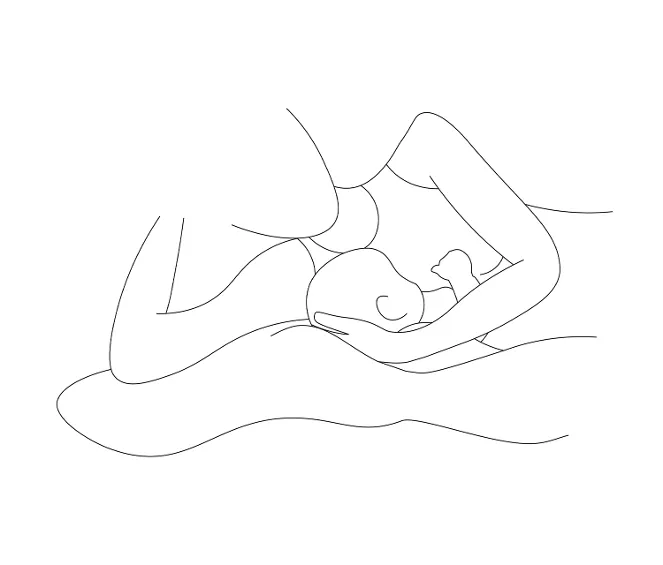
Lying down on your side, this is a popular position with those who've had a C-section or have larger breasts. It takes the weight off the breast (or stomach) and it's easier to get your breasts to your baby's level. It's also easier on your back and shoulders since you're not hunched over.
Rugby or clutch hold
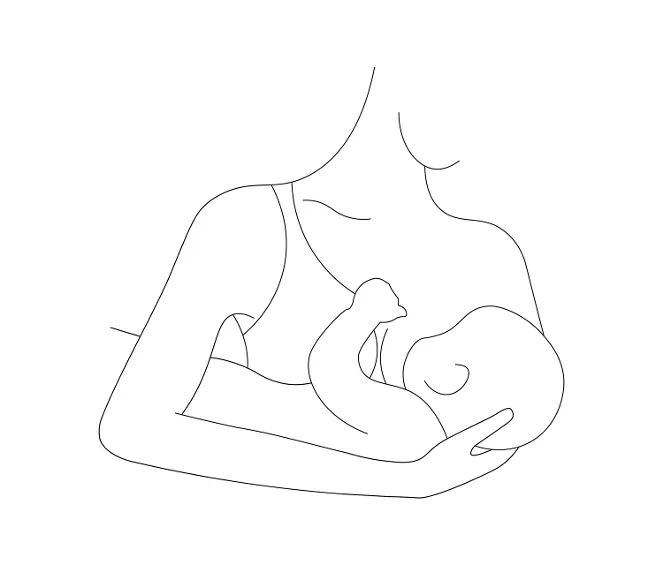
In this position, your baby is supported at the side of your body (like how a football or rugby player carries a ball). If you're feeding from the right breast, hold your baby level, facing up, at your right side. Then, put their head near your right nipple and support their back and legs under your right arm. Gently hold the base of their head with your right palm – popping a cushion underneath your right arm can help support their weight. To protect your back, don’t lean down to your baby, bring them to you instead. Reverse this process for your left breast.
Laid-back breastfeeding or biological nursing
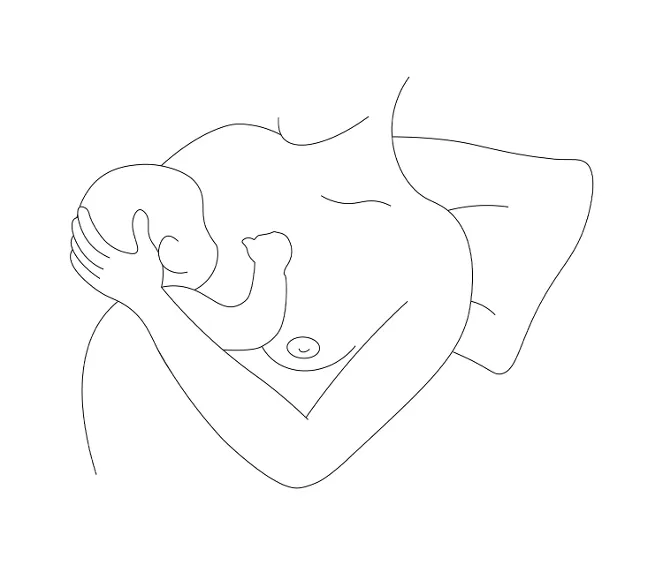
A position that encourages a baby-led latch, laid-back breastfeeding requires a reclined position and baby opens their mouth wide to latch themselves onto the breast. Leaning back allows your breast tissue to flatten away from baby’s nose. Your neck, back, and shoulders are also well-supported in this position, meaning your body gets a much-needed break!
- If you're sat down, lean back or recline on a sturdy surface, but don’t lie flat on your back.
- Let your baby lie on your tummy with their body fully supported. If you’ve had a caesarean delivery, you can lie your little one on one side away from your scar.
- Maintain contact between you and baby, but don’t apply pressure to their neck or back. As you relax into the chair or bed, your baby will relax too.
- You'll notice that your baby’s feet and legs will find something to push against – your leg, hand, or the bed.
- They'll nuzzle or bob their head from side to side until they locate your nipple, then open their mouth wide to latch on.
C-Hold
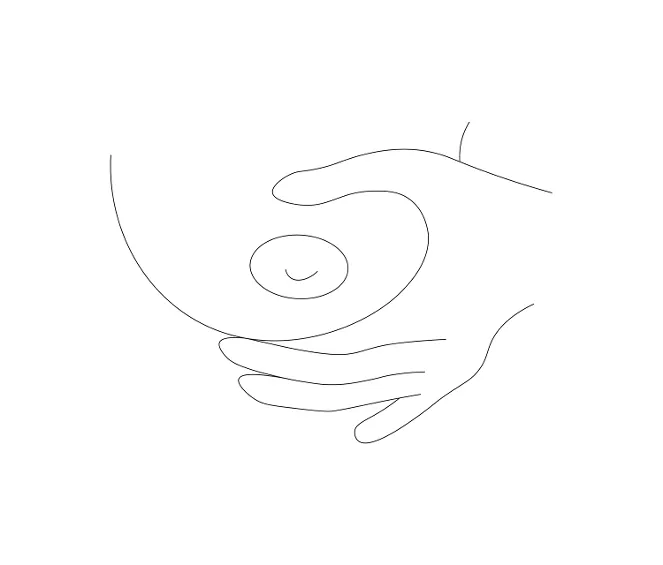
Another thing that can help you breastfeed with larger breasts is the C-hold. This technique supports your breast and aims your nipple toward baby's mouth, making latching on easier.
- Place your breast in the palm of your hand.
- Put your thumb on the top.
- Cup your fingers around the bottom.
- Your hand should be in the shape of the letter C.
- Keep your thumb and fingers behind your areola (the darker skin around your nipple) so they don’t get in the way of baby's mouth as they feed.
What else can I do to make breastfeeding with bigger breasts easier?
In addition to finding the right position to breastfeed, you can also try:
- Getting prepared before baby arrives: Taking a breastfeeding class when you're pregnant can really help boost your confidence and helps you learn different feeding positions and holds.
- Supporting your breasts with the right kind of bra: No one likes underwear that’s uncomfortable, and comfort when you're breastfeeding is more important than ever. A supportive, well-fitting nursing bra in the correct size holds up the weight of your breasts and helps minimise back pain.
- Use a mirror to help you: If you're struggling to see your baby latch due to your larger breasts, you may want to feed in front of a mirror so you can see what's happening.
- Soften your breasts if they’re hard and uncomfortable: If your breasts are engorged, you can use a breast pump or hand express some of your milk before you feed. This softens your breasts and makes it easier for your little one to latch on.
- Bring in a pillow: Pillows can support baby and your breasts in the early days when you're both learning how to breastfeed.Supporting and lifting your breast helps to keep baby's nose clear so they can breathe and swallow correctly. On the flip side, some people with bigger breasts find that benefit of having large breasts is that there's no need for pillows, and their baby can be held lower during a feed, with their weight supported on the lap. It's just a case of experimenting to see what works best for your both.
